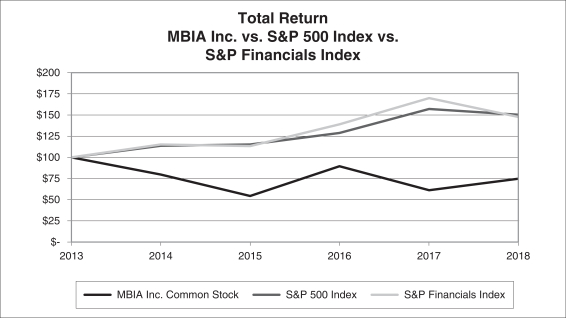Item 1A. Risk Factors (continued)
Political and economic conditions in the United States, the Eurozone and elsewhere may materially adversely affect our business and results of operations.
As a financial guarantee company, our insured exposures and our results of operations can be materially affected by general political and economic conditions, both in the U.S. and around the world. General global unrest, including without limitation the potential exit of the United Kingdom from the European Union, as well as fraud, terrorism, catastrophic events, natural disasters, pandemics or similar events could disrupt the economy in the U.S. and other countries where we have insured exposure or operate our businesses. In certain jurisdictions outside the U.S. we face higher risks of governmental intervention through nationalization or expropriation of assets, changes in regulation, an inability to enforce our rights in court or otherwise and corruption, which may cause us to incur losses on the exposures we insure or reputational harm.
Budget deficits at all levels of government in the U.S., recessions, increases in corporate, municipal, sovereign,sub-sovereign or consumer default rates and other general economic conditions may adversely impact the performance of our insured portfolios and the Company’s investment portfolio. In addition, we are exposed to correlation risk as a result of the possibility that multiple credits will experience losses as a result of any such event or series of events, in particular exposures that are backed by revenues from business and personal travel, such as aircraft securitizations and bonds backed by hotel taxes.
Financial modeling involves uncertainty over ultimate outcomes, which makes it difficult to estimate liquidity, potential claims payments, loss reserves and fair values.
The Company uses third-party and internal financial models to estimate liquidity, potential claims payments, loss reserves and fair values. We use internal financial models to conduct liquidity stress-scenario testing to ensure that we maintain cash and liquid securities sufficient to meet our payment requirements. These measurements are performed on a legal entity and operating segment basis. We also rely on financial models, generated internally and supplemented by models generated by third parties, to estimate factors relating to the highly complex securities we insure, including future credit performance of the underlying assets, and to evaluate structures, rights and our potential obligations over time. We also use internal models for ongoing insurance portfolio monitoring and to estimate case basis loss reserves and, where applicable, to report our obligations under our contracts at fair value. We may supplement such models with third-party models or use third-party experts to consult with our internal modeling specialists. Both internal and external models are subject to model risk and information risk, and there can be no assurance that the inputs into the models received from third parties will be accurate or that the models themselves are accurate or comprehensive in estimating our liquidity, potential future paid claims, related loss reserves and fair values or that they are similar to methodologies employed by our competitors, counterparties or other market participants. Estimates of our claims payments, in particular, may materially impact our liquidity position. We may make changes to our estimated claims payments, loss reserves or fair value models from time to time. These changes could materially impact our financial results.
Our risk management policies and procedures may not adequately detect or prevent future losses.
We assess our risk management policies and procedures on a periodic basis. As a result of such assessment, we may take steps to change our internal risk assessment capabilities and procedures, portfolio management policies, systems and processes and our policies and procedures for monitoring and assessing the performance of our insured portfolio in changing market conditions. There can be no assurance, however, that these steps will be adequate to avoid future losses. In some cases, losses can be substantial, particularly if a loss occurs on a transaction in which we have a large notional exposure or on a transaction structured with large, bullet-type maturities.
Legal, Regulatory and Other Risk Factors
Regulatory change could adversely affect our businesses, and regulations limit investors’ ability to affect a takeover or business combination that shareholders might consider in their best interests.
The financial guarantee insurance industry has historically been and will continue to be subject to the direct and indirect effects of governmental regulation, including insurance laws, securities laws, tax laws, legal precedents and accounting rules affecting asset-backed and municipal obligations, as well as changes in those laws. Also, the failure to comply with applicable laws and regulations could expose our insurance companies, their directors or shareholders to fines, the loss of their insurance licenses, and the inability to engage in certain business activity, as the case may be. These laws also limit investors’ ability to affect a takeover or business combination without the approval of our insurance regulators.
16
